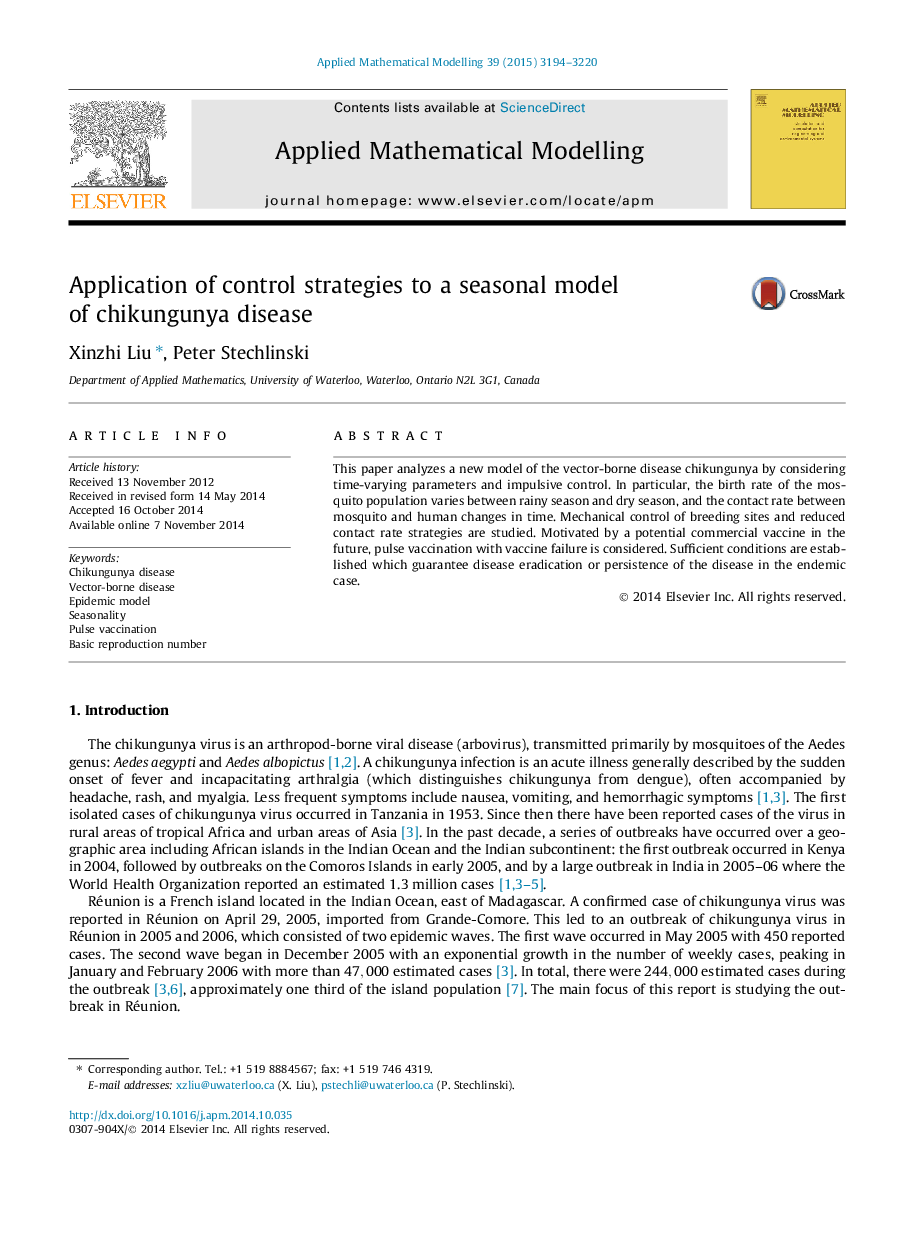| Article ID | Journal | Published Year | Pages | File Type |
|---|---|---|---|---|
| 1703713 | Applied Mathematical Modelling | 2015 | 27 Pages |
Abstract
This paper analyzes a new model of the vector-borne disease chikungunya by considering time-varying parameters and impulsive control. In particular, the birth rate of the mosquito population varies between rainy season and dry season, and the contact rate between mosquito and human changes in time. Mechanical control of breeding sites and reduced contact rate strategies are studied. Motivated by a potential commercial vaccine in the future, pulse vaccination with vaccine failure is considered. Sufficient conditions are established which guarantee disease eradication or persistence of the disease in the endemic case.
Related Topics
Physical Sciences and Engineering
Engineering
Computational Mechanics
Authors
Xinzhi Liu, Peter Stechlinski,
